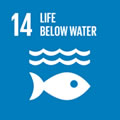Por favor, use este identificador para citar o enlazar a este item:
http://hdl.handle.net/10261/331255COMPARTIR / EXPORTAR:
 SHARE SHARE
 CORE
BASE CORE
BASE
|
|
| Visualizar otros formatos: MARC | Dublin Core | RDF | ORE | MODS | METS | DIDL | DATACITE | |

| Título: | First evidence of legacy chlorinated POPs bioaccumulation in Antarctic sponges from the Ross sea and the South Shetland Islands |
Autor: | Pala, Nicolas; Jiménez, Begoña CSIC ORCID ; Roscales, José L. CSIC ORCID CVN; Bertolino, Marco; Baroni, Davide; Figuerola, Blanca CSIC ORCID ; Àvila, Conxita CSIC ORCID; Corsolini, Simonetta | Palabras clave: | PCBs Chlorinated pesticides Porifera Southern Ocean Bioaccumulation Benthic organisms |
Fecha de publicación: | jul-2023 | Editor: | Elsevier | Citación: | Environmental Pollution 329: 121661 (2023) | Resumen: | Antarctica is no longer pristine due to the confirmed presence of anthropogenic contaminants like Persistent Organic Pollutants (POPs). Benthic organisms are poorly represented in contamination studies in Antarctica although they are known to bioaccumulate contaminants. Sponges (Phylum Porifera) are dominant members in Antarctic benthos, both in terms of abundance and biomass, and are an important feeding source for other organisms, playing key functional roles in benthic communities. To the best of our knowledge, legacy chlorinated POPs such as polychlorinated biphenyls (PCBs), hexachlorobenzene (HCB), and dichlorodiphenyltrichloroethane (DDT) and their metabolites have never been investigated in this Phylum in Antarctica. The aim of this work was to evaluate the bioaccumulation of PCBs, HCB, o,p’- and p,p’-DDT and their DDE and DDD isomers in 35 sponge samples, belonging to 17 different species, collected along the coast of Terra Nova Bay (Adèlie Cove and Tethys Bay, Ross Sea), and at Whalers Bay (Deception Island, South Shetland Islands) in Antarctica. Lipid content showed a significant correlation with the three pollutant classes. The overall observed pattern in the three study sites was ΣPCBs>ΣDDTs>HCB and it was found in almost every species. The ΣPCBs, ΣDDTs, and HCB ranged from 54.2 to 133.7 ng/g lipid weight (lw), from 17.5 to 38.6 ng/g lw and from 4.8 to 8.5 ng/g lw, respectively. Sponges showed contamination levels comparable to other Antarctic benthic organisms from previous studies. The comparison among sponges of the same species from different sites showed diverse patterns for PCBs only in one out of four cases. The concentration of POPs did not vary significantly among the three sites. The predominance of lower chlorinated organochlorines in the samples suggested that long-range atmospheric transportation (LRAT) could be the major driver of contamination as molecules with a high long range transport potential (e.g. low chlorinated PCBs, HCB) prevails on heavier ones | Descripción: | 4 figures, 1 table | Versión del editor: | https://doi.org/10.1016/j.envpol.2023.121661 | URI: | http://hdl.handle.net/10261/331255 | DOI: | 10.1016/j.envpol.2023.121661 | ISSN: | 0269-7491 | E-ISSN: | 1873-6424 |
| Aparece en las colecciones: | (ICM) Artículos |
Ficheros en este ítem:
| Fichero | Descripción | Tamaño | Formato | |
|---|---|---|---|---|
| Pala_et_al_2023_postprint.pdf | 1,84 MB | Adobe PDF |  Visualizar/Abrir |
CORE Recommender
SCOPUSTM
Citations
4
checked on 25-abr-2024
WEB OF SCIENCETM
Citations
1
checked on 28-feb-2024
Page view(s)
31
checked on 27-abr-2024
Download(s)
35
checked on 27-abr-2024
Google ScholarTM
Check
Altmetric
Altmetric
NOTA: Los ítems de Digital.CSIC están protegidos por copyright, con todos los derechos reservados, a menos que se indique lo contrario.


